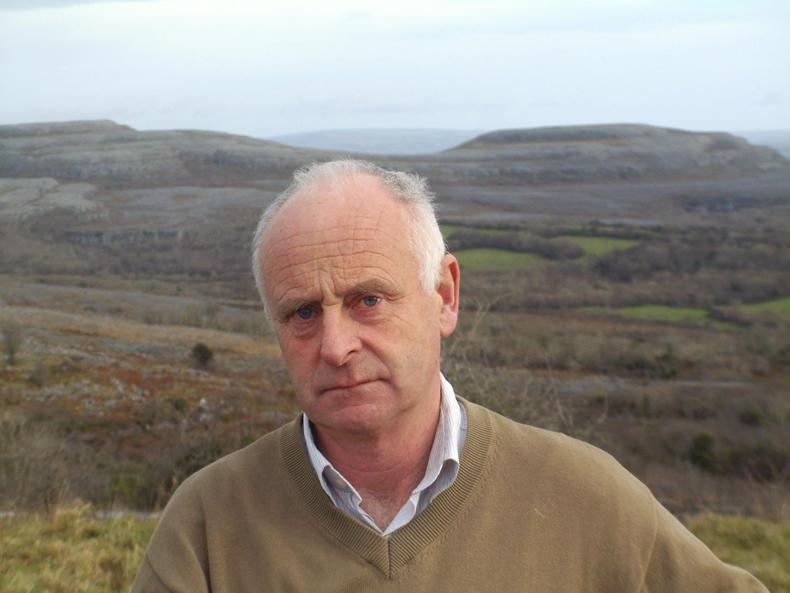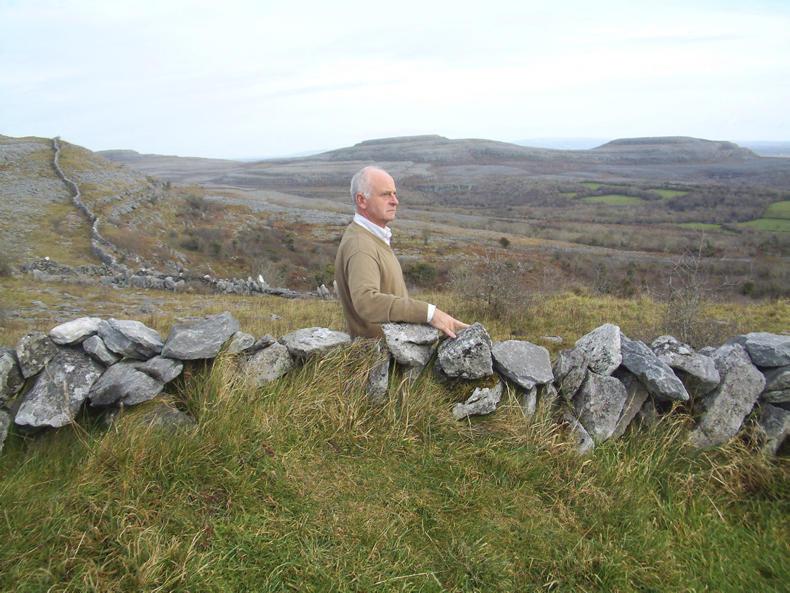
Michael Davoren.
Michael Davoren, suckler farmer, the Burren, Co Clare
Michael Davoren, a long-time participant in the Burren LIFE project, gave his thoughts about being paid to deliver a result.
“The programme works really well for the farmer, because it puts the farmer in charge of what he does. The farmer decides with his planner what environmental work he wants to do.
For thousands of years, my ancestors earned a living from producing livestock to meet the market needs of the time, which was food
“Once we turn the whole idea of the environmental payment into a product, farmers understand the product. We want to produce the best product we can, like we produce the best suckler calves we can.
“For thousands of years, my ancestors earned a living from producing livestock to meet the market needs of the time, which was food.
“In the future, we’ll be using the same livestock to produce environmental goods that society want and society are prepared to pay for, but we the farmers are the only ones who can do it.”

Tommy McPartlan from Co Leitrim.
Tommy McPartlan, suckler farmer, Drumkeeran, Co Leitrim
Tommy McPartlan participated in a pilot scheme in Leitrim targeting the Marsh Fritillary butterfly and he outlined what he took from the project.
“I have about 35ha of grassland and woodland. My land is very wet land and I keep 10 suckler cows and calves on it.
I was told I’d probably get between €270/ha and €370/ha depending on the score
"I don’t have it overstocked and I sell off the calves when they’re about six months.”
McPartlan was told his farm provided the perfect habitat for the butterfly, as it had the correct food source, was wet, and wasn’t overstocked.
“I was told I’d probably get between €270/ha and €370/ha depending on the score. It was a good scheme because I had nothing to do really,” he said.
The farmer was creating the best habitat without realising, but the scheme rewarded him for doing so.

Michael Davoren.
Michael Davoren, suckler farmer, the Burren, Co Clare
Michael Davoren, a long-time participant in the Burren LIFE project, gave his thoughts about being paid to deliver a result.
“The programme works really well for the farmer, because it puts the farmer in charge of what he does. The farmer decides with his planner what environmental work he wants to do.
For thousands of years, my ancestors earned a living from producing livestock to meet the market needs of the time, which was food
“Once we turn the whole idea of the environmental payment into a product, farmers understand the product. We want to produce the best product we can, like we produce the best suckler calves we can.
“For thousands of years, my ancestors earned a living from producing livestock to meet the market needs of the time, which was food.
“In the future, we’ll be using the same livestock to produce environmental goods that society want and society are prepared to pay for, but we the farmers are the only ones who can do it.”

Tommy McPartlan from Co Leitrim.
Tommy McPartlan, suckler farmer, Drumkeeran, Co Leitrim
Tommy McPartlan participated in a pilot scheme in Leitrim targeting the Marsh Fritillary butterfly and he outlined what he took from the project.
“I have about 35ha of grassland and woodland. My land is very wet land and I keep 10 suckler cows and calves on it.
I was told I’d probably get between €270/ha and €370/ha depending on the score
"I don’t have it overstocked and I sell off the calves when they’re about six months.”
McPartlan was told his farm provided the perfect habitat for the butterfly, as it had the correct food source, was wet, and wasn’t overstocked.
“I was told I’d probably get between €270/ha and €370/ha depending on the score. It was a good scheme because I had nothing to do really,” he said.
The farmer was creating the best habitat without realising, but the scheme rewarded him for doing so.








 This is a subscriber-only article
This is a subscriber-only article










SHARING OPTIONS: